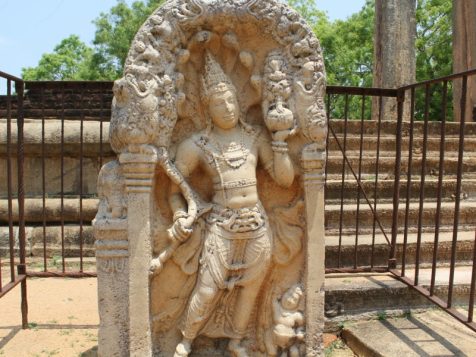Also, a member of the prestigious Abhayagiri complex, the Ratna Prasada dates back to the era of King Kanitta Tissa. His reign was during the 1st Century AD during the Anuradhapura Period and was specifically built to cater to the Abhayagiri monks. Ratna Prasada was later redone under King Mahinda II during the 8th Century, thus turning it into one of the most magnificent historical places in Sri Lanka. This version had a gold Buddha image, so the evidence suggests.
However, after South Indian invaders ransacked the place it was rebuilt under the patronage of Sena II during the latter years of the 8th Century.
The clergymen here formed a separate sect from the Mahavihara monks. They were an unorthodox Mahayana denomination, formed in the 1st Century BC during the reign of King Valagamba. Eventually, though, Abhayagiri became the larger and more prolific institute and it managed to draw in more followers than the orthodox Theravadas. Whatever it looked like in life, all we know is that the Ratna Prasada was once a gigantic building, probably with multiple floors. The remaining pillars are indeed massive and the foundations are often seen dotting the landscape. Ratna Prasada’s claim to fame is its best-preserved guardian stone.
This image on this erect stela-like artwork is detailed with magnificent precision. It is that of an androgynous, divine, or semi-divine being, a Naga. Nagas were often reputed to be a whole tribe of people living before the Aryan conquest but then went extinct through interbreeding. Eventually, the role of the Nagas and their serpent-oriented culture went to being the benevolent guardians of water sources. The humanoid Naga has a ring of spectacled cobra hoods around his head like a reptilian halo. He holds a stylized ceremonial bow in one hand and an elaborate vessel in the other. No detail is out of place in the guardian stone.
Written by Vasika Udurawane for Travel Lanka Compass



0 Comment